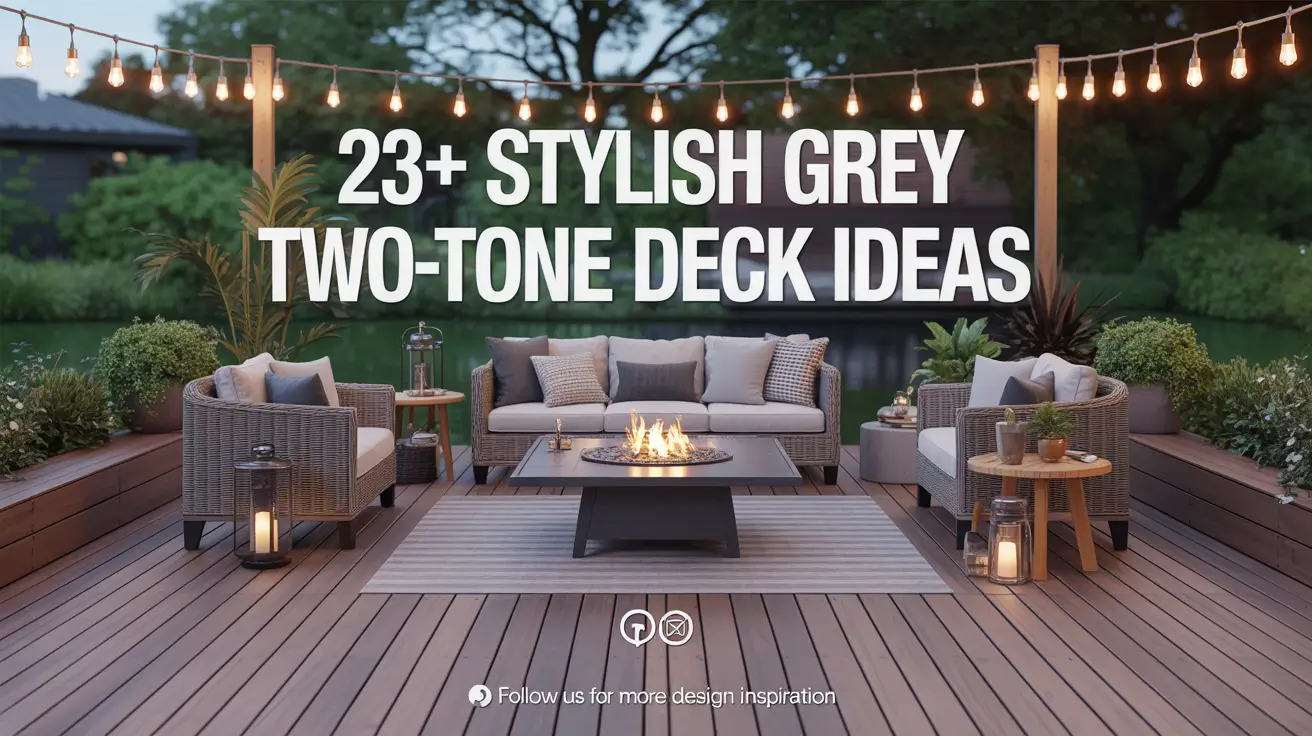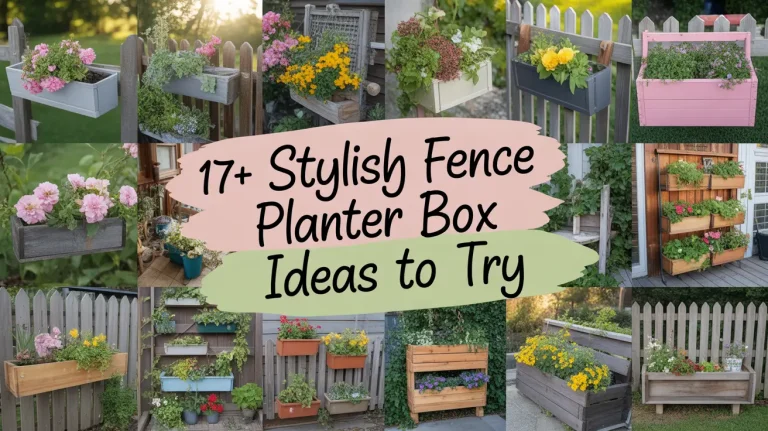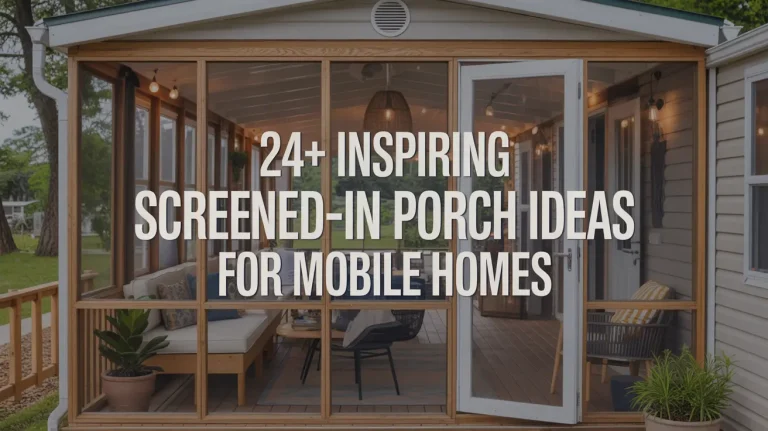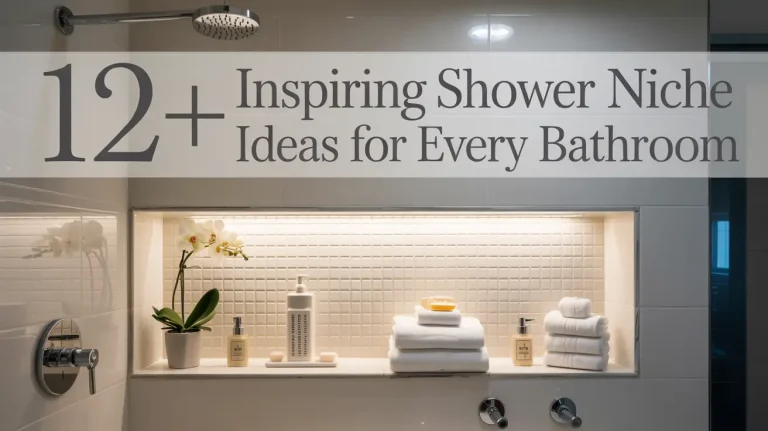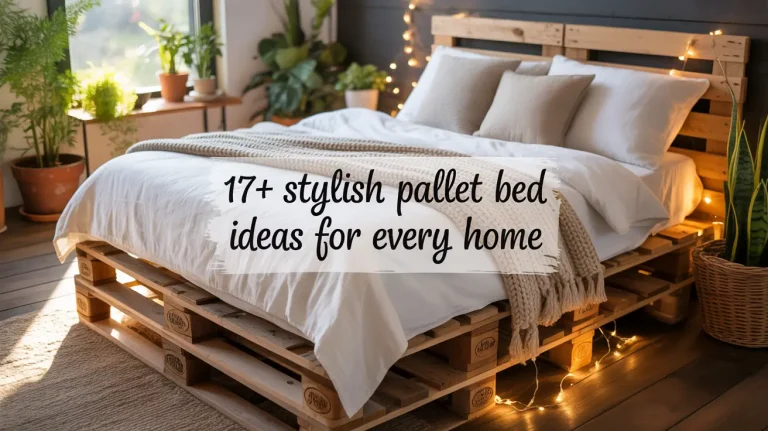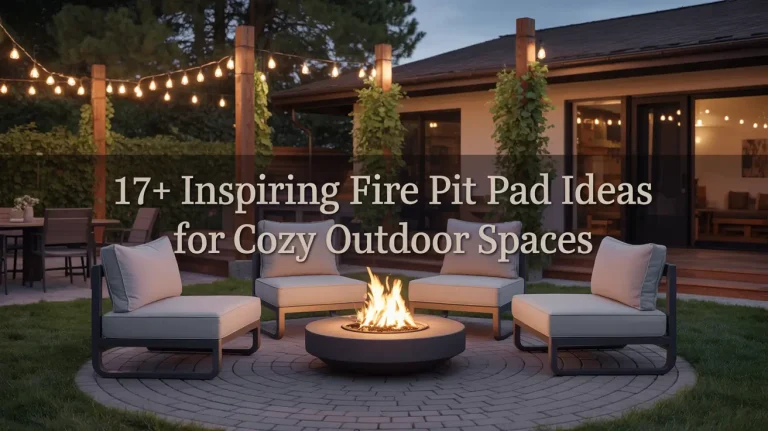23+ Stylish Grey Two-Tone Deck Ideas
Why Grey Two-Tone Decking Is a Smart Outdoor Choice
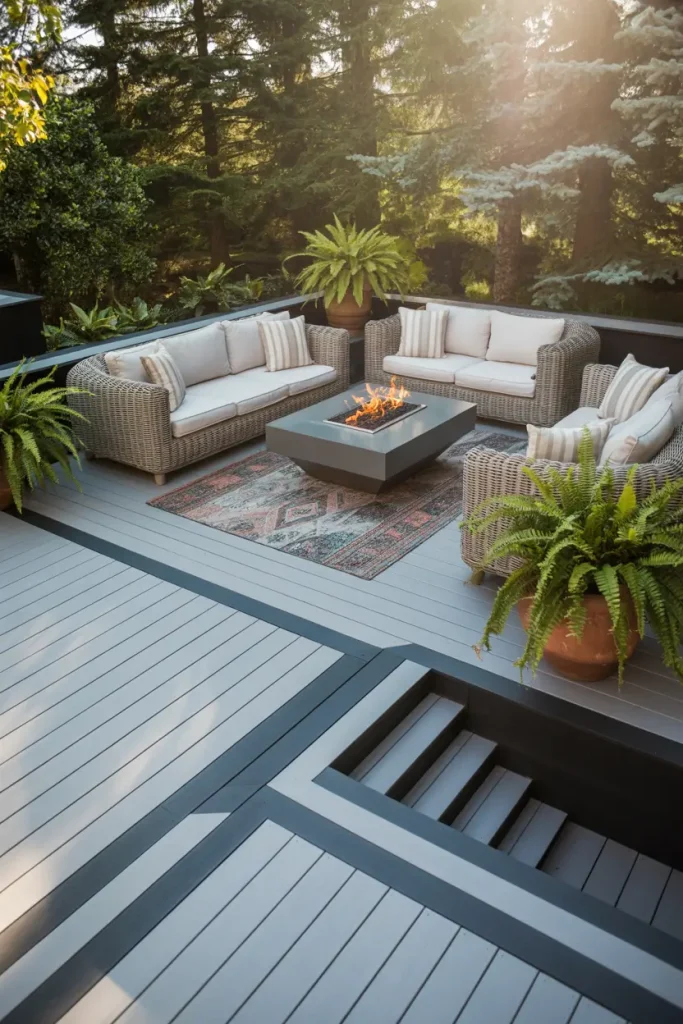
Grey two-tone decking is more than just a trend—it’s a smart way to upgrade your outdoor space with a timeless, clean look. This style uses light and dark grey tones to add depth, definition, and character to any deck. Lighter greys open up tight spaces, while darker greys create contrast and hide wear. Whether you’re working with a small patio or a full backyard build, this design works well with greenery, stone, brick, or even pops of color. Plus, grey is low-maintenance, dirt-hiding, and fade-resistant, making it a reliable and attractive choice for long-term use.
This versatile style suits many outdoor lifestyles, from quiet retreats to lively gathering spots. Its neutral palette makes it easy to pair with furniture, plants, and architectural details. Two-tone grey decking also allows room for creativity—you can experiment with layout patterns, border details, or materials without overwhelming the space.
Whether you’re doing a DIY weekend refresh or planning a custom build, these expanded and inspiring ideas will help you get the most from your outdoor deck using stylish grey tones.
1. Define Zones with Light and Dark Grey Boards
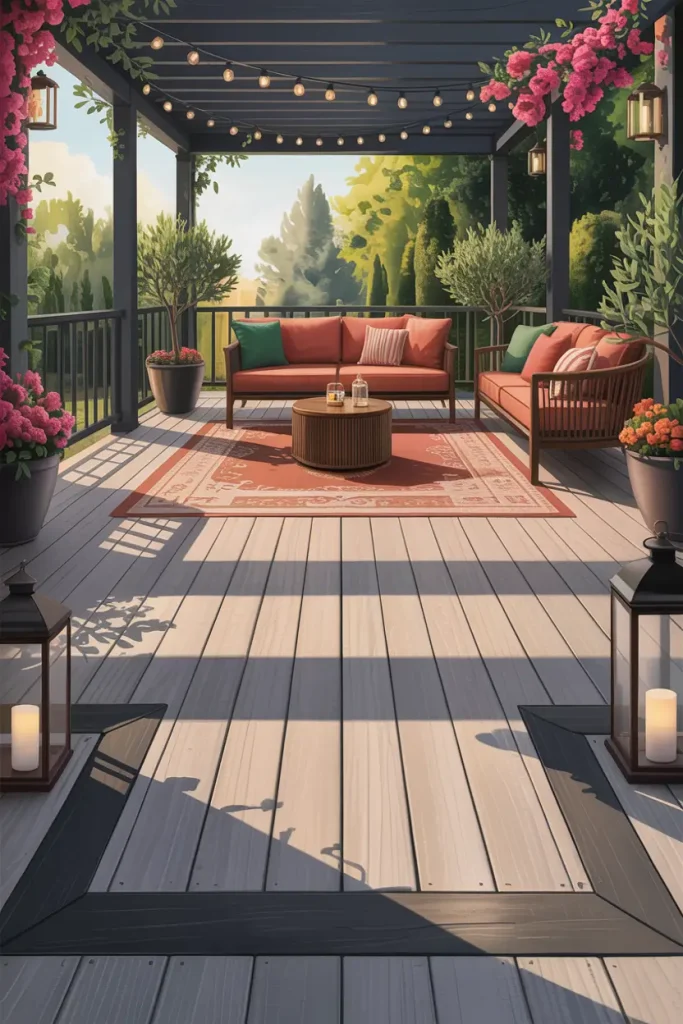
Zoning your deck with alternating light and dark grey boards helps organize the space visually. Place light grey boards in the center for lounging or dining, and surround them with darker ones for framing. This makes each section stand out without adding walls or railings. It also makes your deck feel more expansive and tailored.
2. Pair Grey Decking with Black Railings for Contrast
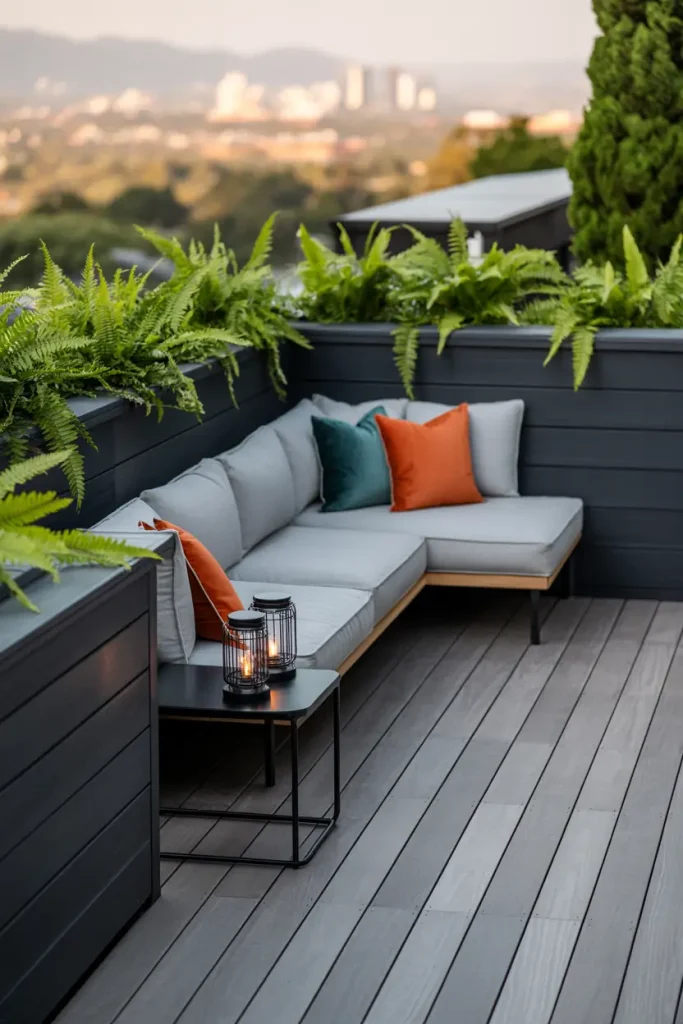
Black railings add bold contrast and a finished look. They help highlight the shape of your deck and give it definition against the landscape. Black metal railings work especially well in modern or urban settings, while black wood rails suit more traditional homes. The contrast also draws attention to your deck’s clean lines.
3. Use Diagonal Patterns for Movement
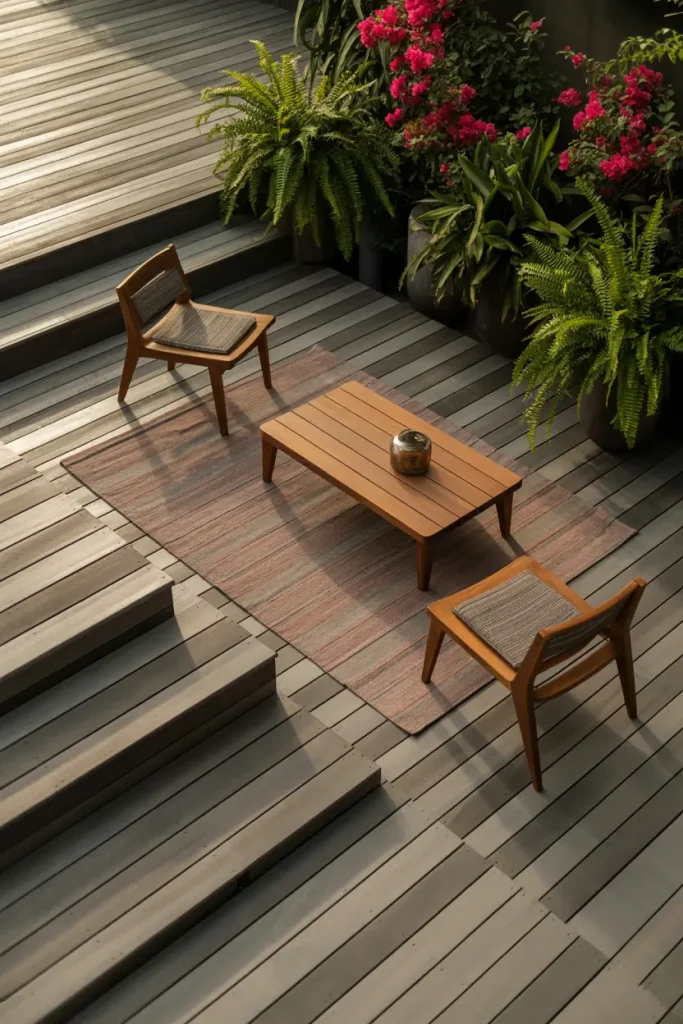
Diagonal board layouts create a sense of motion and energy. When you alternate shades of grey diagonally, it produces a more dynamic visual effect. This technique is great for narrow decks or long walkways, as it breaks up space and keeps the eye moving.
4. Frame Stairs and Edges with Grey Borders
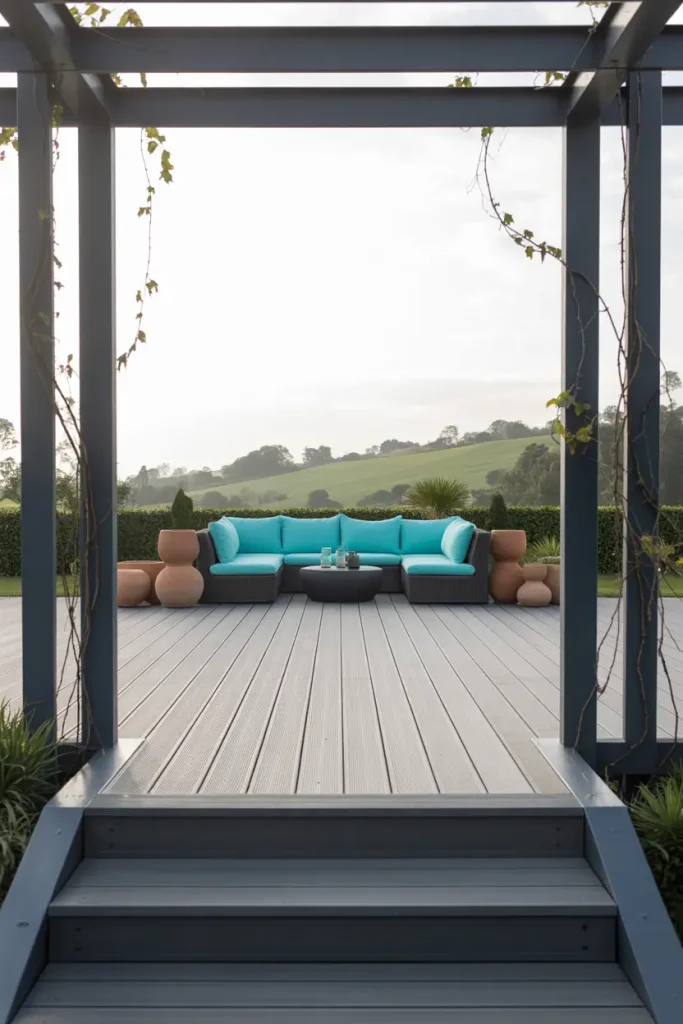
Deck stairs and edges are ideal places to highlight with contrasting grey tones. Outline stairs in darker grey and use lighter shades for the main steps. This adds visual safety cues and helps prevent missteps. Framing the edge of the entire deck with a border color also makes the structure feel finished and grounded.
5. Mix Wood-Look Grey with Smooth Grey Boards
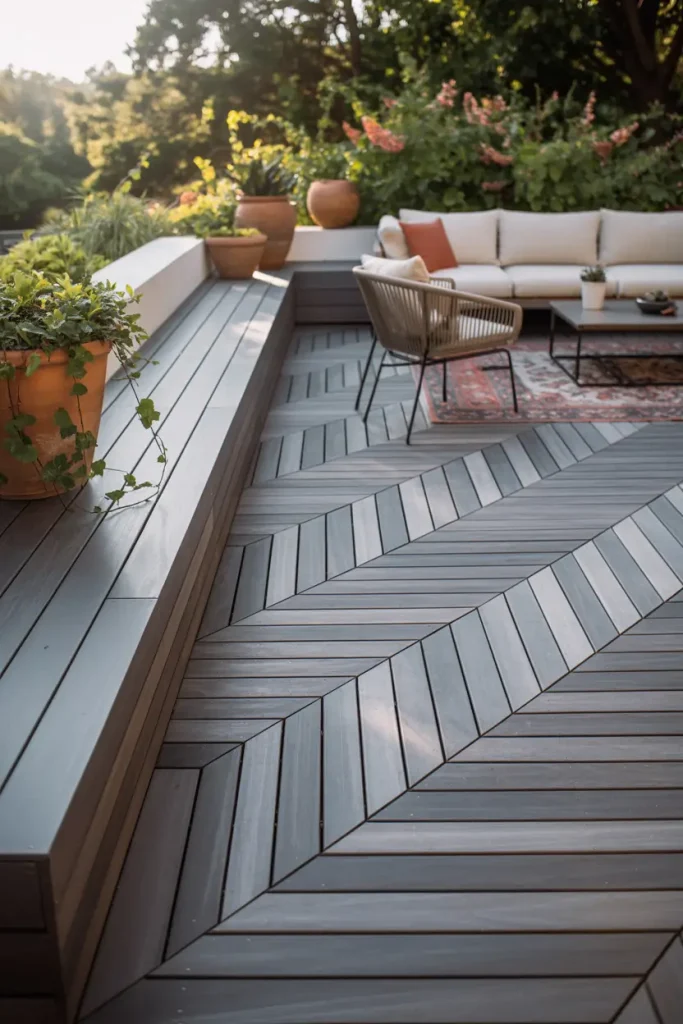
Wood-look greys add warmth and texture, while smooth boards feel modern and sleek. When used together, they create a deck that feels natural yet contemporary. Try wood-look grey boards for the floor and smooth ones for railings or benches. This mix keeps the space interesting without overwhelming it.
6. Build a Two-Tone Grey Platform Deck
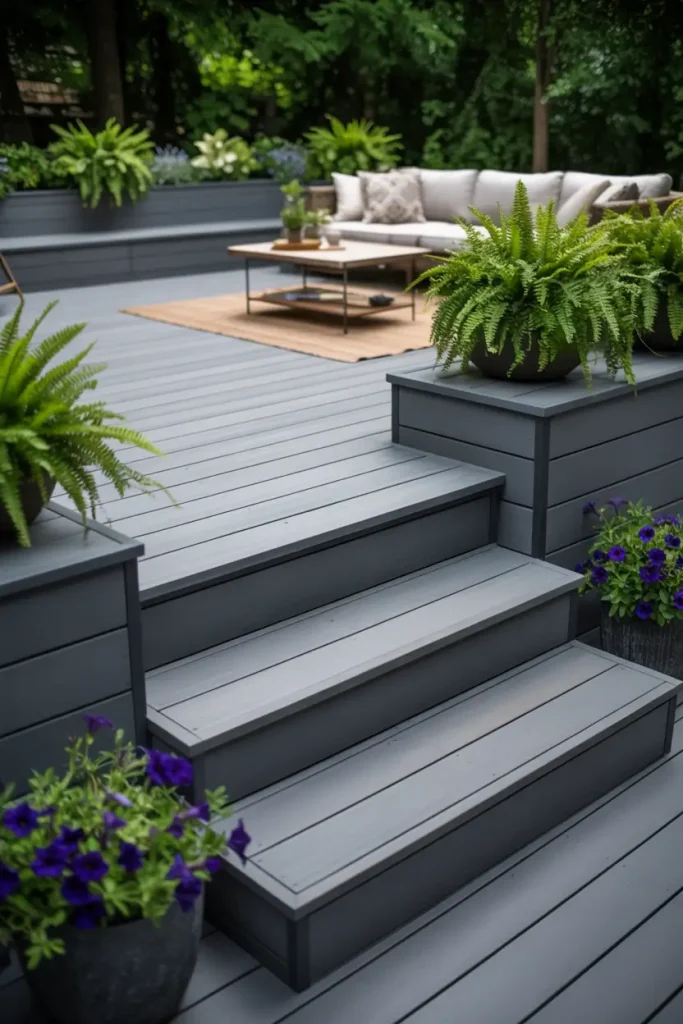
A raised platform in darker grey gives your deck weight and definition, while lighter grey top boards brighten the space. This layered look makes the deck feel custom-built and visually engaging. Add a few wide steps and planters around the edge to complete the design.
7. Add Stone Features to Complement Grey Decking
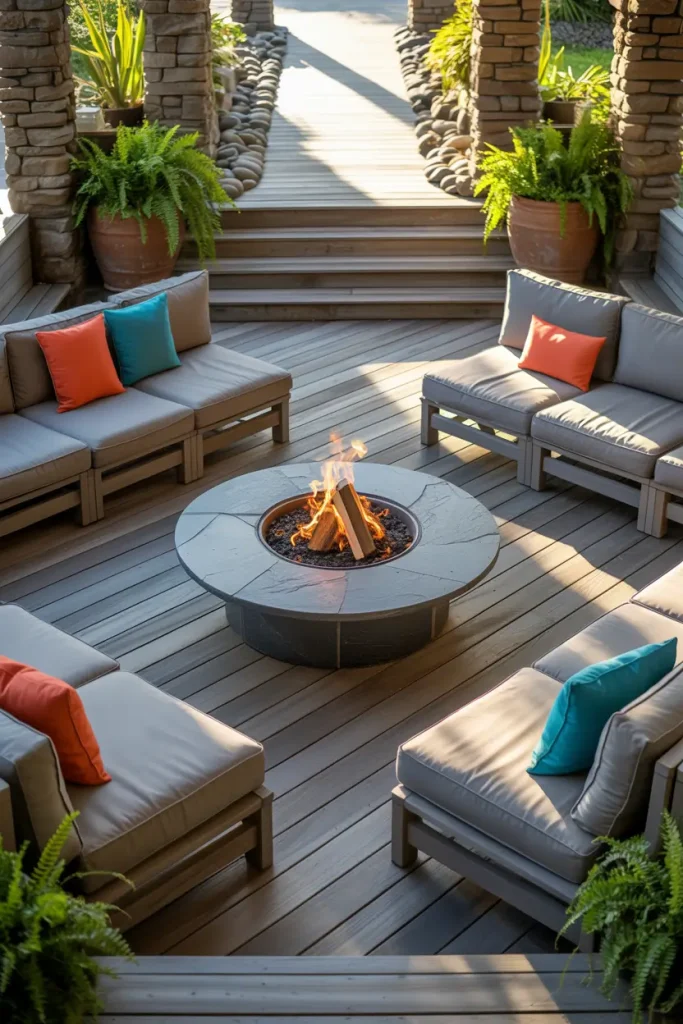
Natural stone pairs beautifully with grey decking. Think about using slate, granite, or even pebbled walkways near or around your deck. These textures balance out the clean lines of grey boards and add an earthy, grounded feel. A stone fire pit or column can tie the whole area together.
8. Use White Trim for Brightness
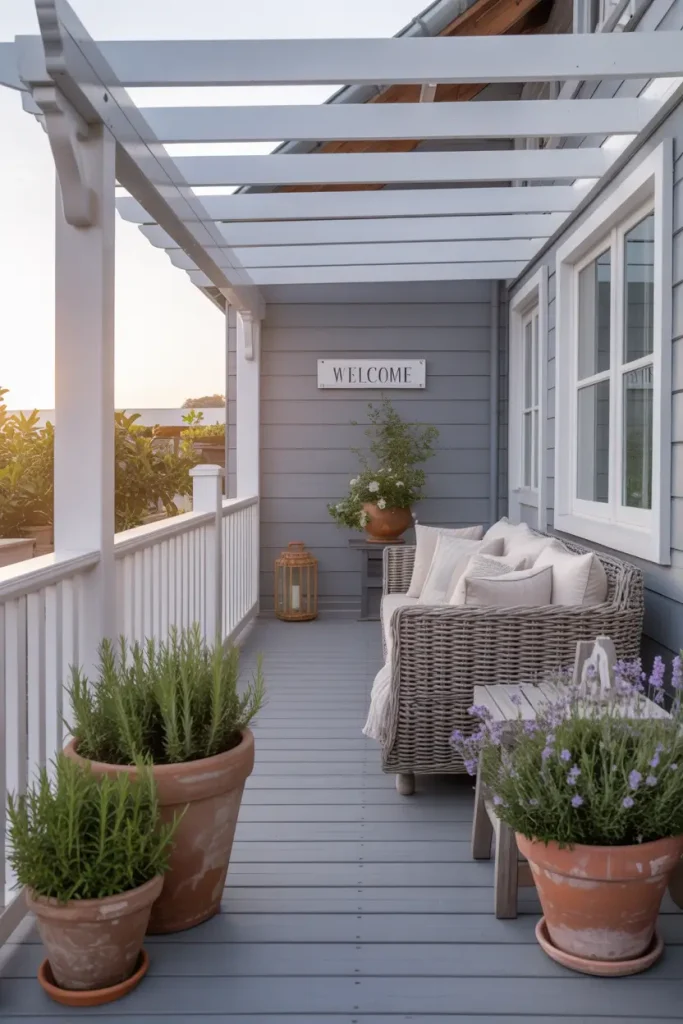
White trim pops next to grey decking and helps define its shape. It’s a classic accent that brightens up shaded decks and softens darker tones. White works well for railings, pergolas, or even fascia boards. It’s perfect if you’re going for a coastal, farmhouse, or cottage look.
9. Lay Grey Decking in a Herringbone Pattern
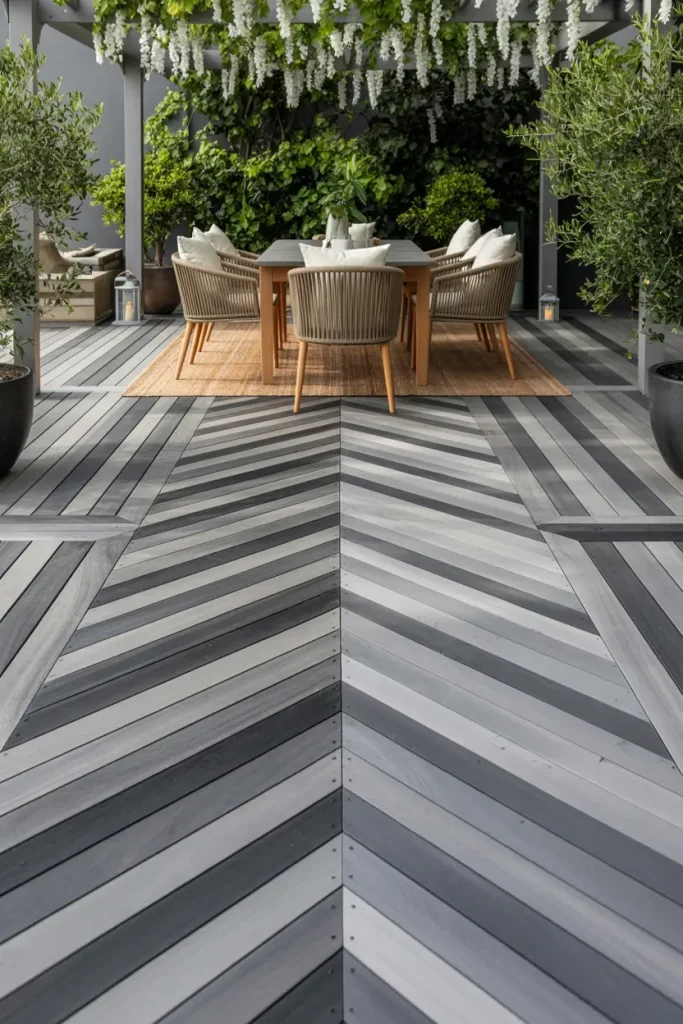
The herringbone pattern is eye-catching and gives your deck a woven texture. Using two greys in alternating sections makes the design pop without being too flashy. Place the pattern under a pergola, dining set, or at the deck entrance to create a focal point.
10. Choose Neutral Furniture for a Relaxed Look
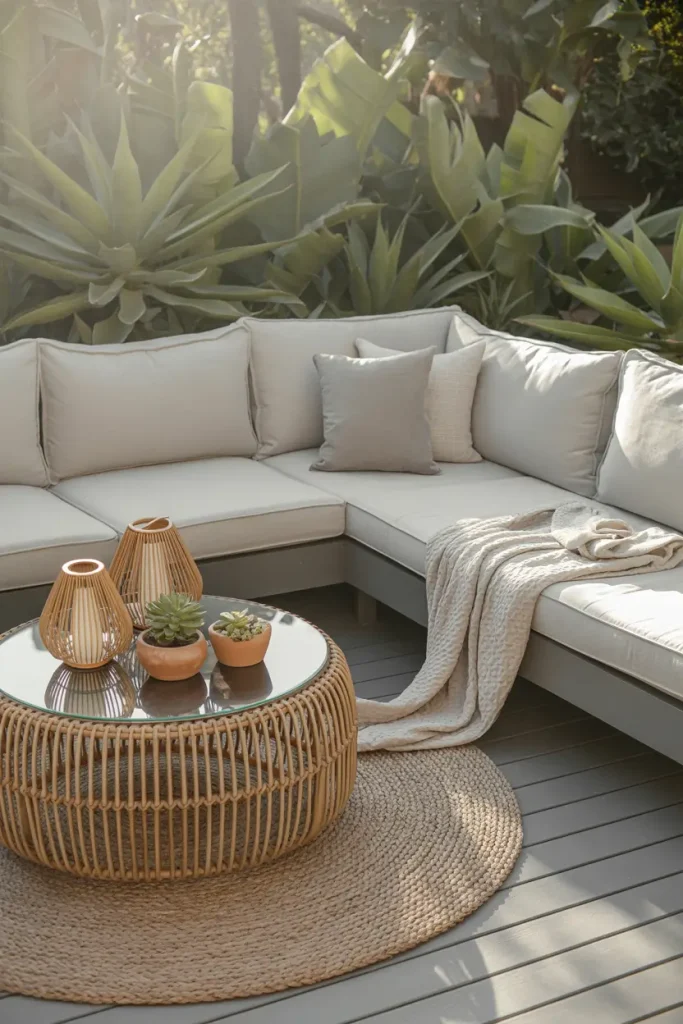
Soft neutrals like beige, cream, or light brown keep your space feeling open and calm. These tones don’t compete with the greys in your deck. Go for cushioned seating, woven rugs, and pale wood tables to enhance the serene atmosphere. Neutrals also make it easy to swap out seasonal décor.
11. Add a Built-in Grey Storage Bench
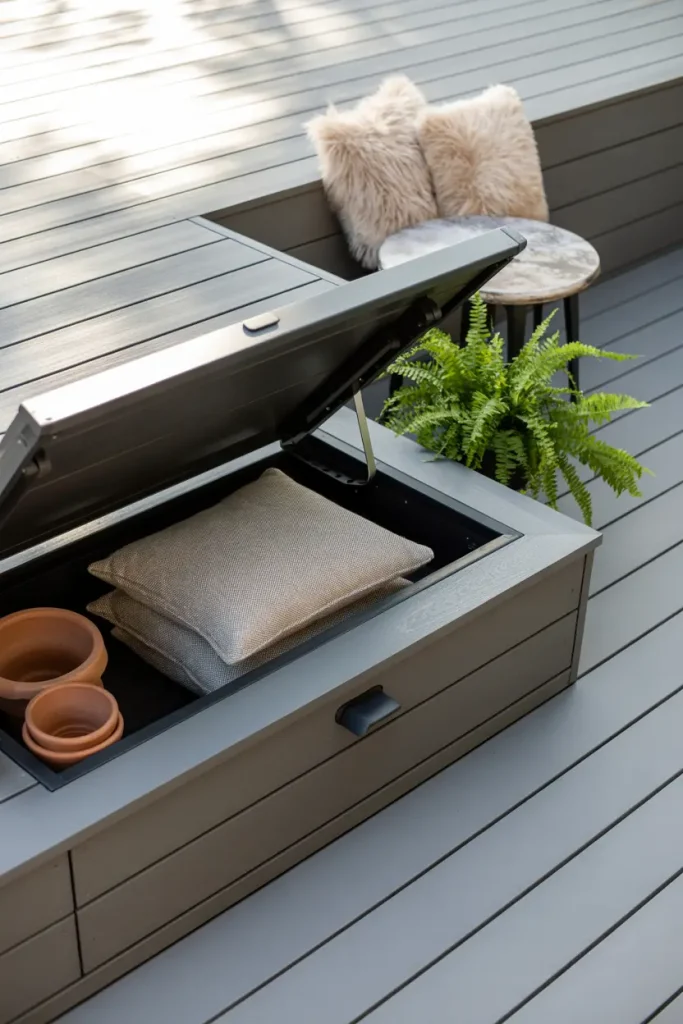
Add functionality with a built-in bench that doubles as storage. Use matching or contrasting grey shades for the seat and base to keep the look cohesive. This is especially helpful for storing cushions, toys, or gardening tools while keeping the space clutter-free.
12. Use Two-Tone Grey Composite Boards
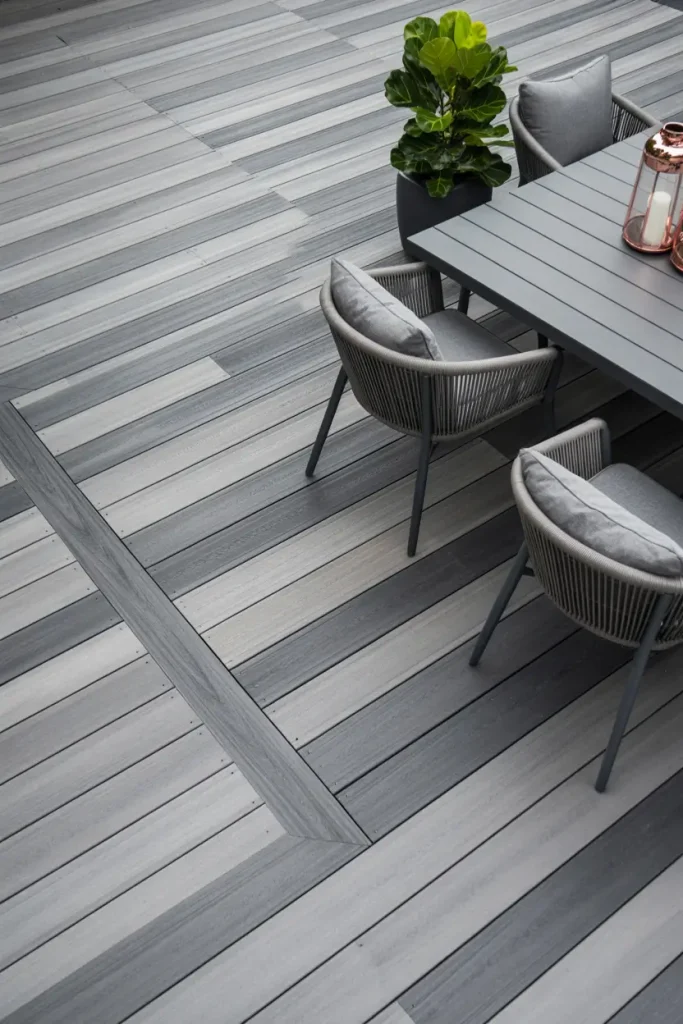
Composite decking in dual greys simplifies your build. These boards often mimic natural grain, offer weather resistance, and don’t require staining. They’re great for busy households or rental properties that need low-maintenance upgrades.
13. Decorate with Bright Rugs and Pillows
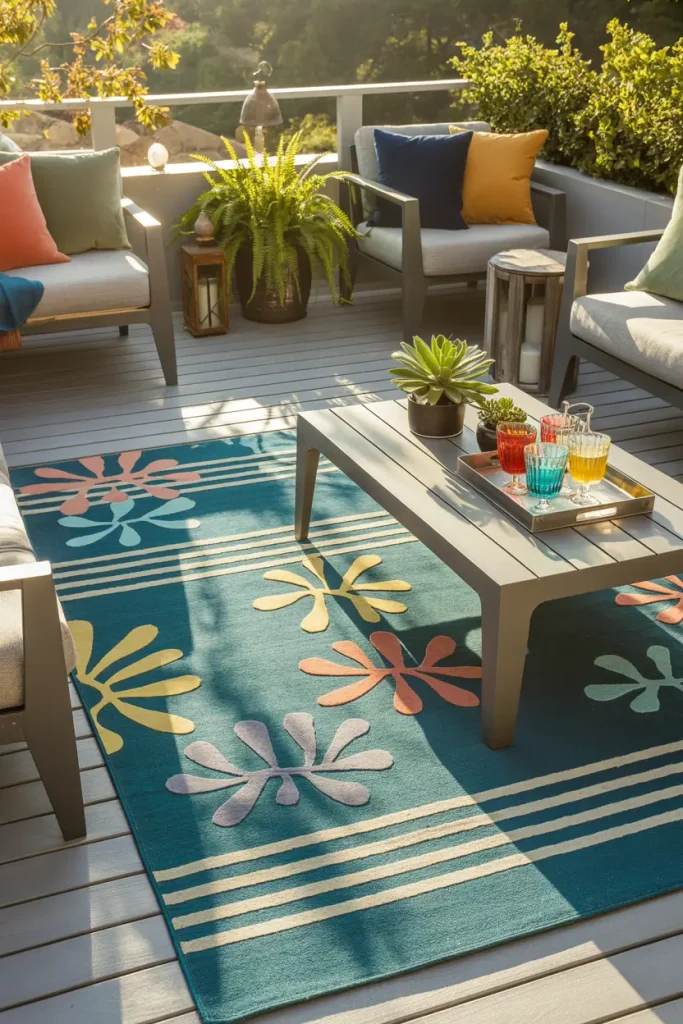
Add personality with colorful outdoor textiles. Rugs and cushions in coral, navy, mustard, or sage bring life to grey tones without overwhelming them. Patterns like stripes, florals, or geometrics can also energize the space. Just make sure to pick weather-resistant fabrics.
14. Top the Deck with a Grey Pergola
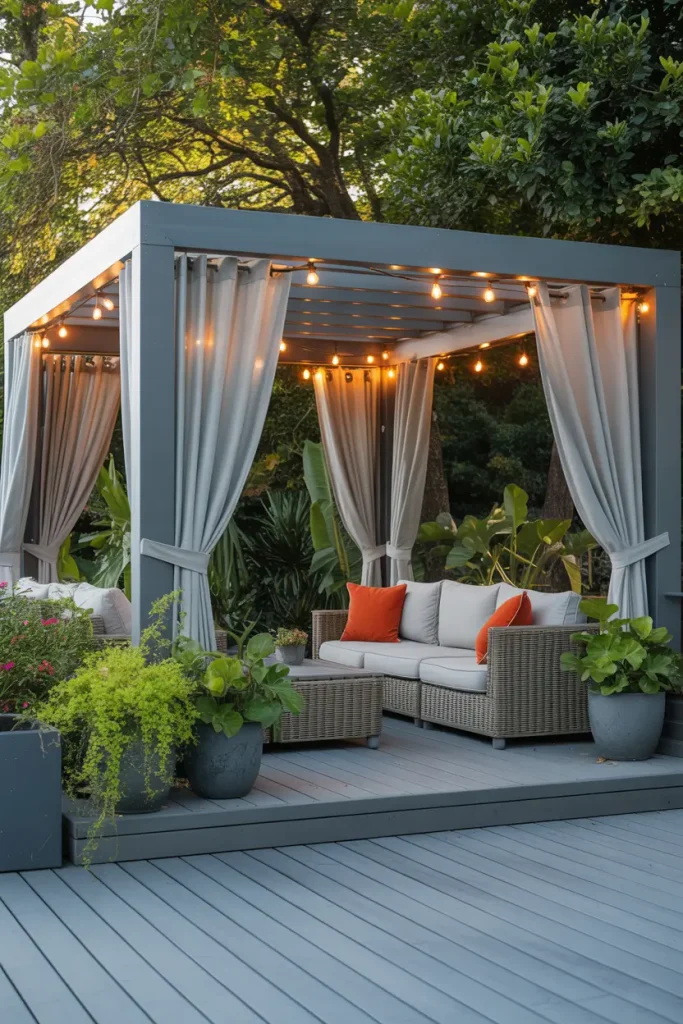
Pergolas add shade and architectural style. Use a grey pergola in the same color family or slightly darker than your decking. Hang string lights or curtains for ambiance. The structure helps define your outdoor room and elevates its overall design.
15. Mix Warm and Cool Greys
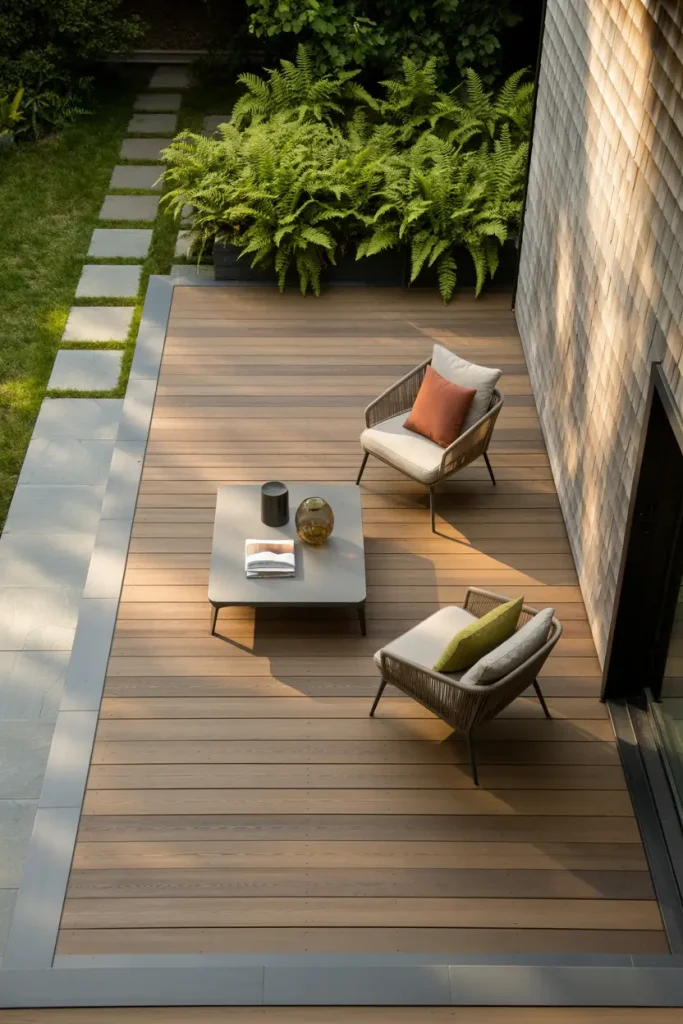
Using warm greys (with brown or taupe hints) alongside cool greys (with blue or silver undertones) creates depth and richness. This subtle variety makes your deck look layered and thoughtful. It also helps match surrounding materials like siding, pavers, or furniture.
16. Add Lighting to Highlight Grey Contrast
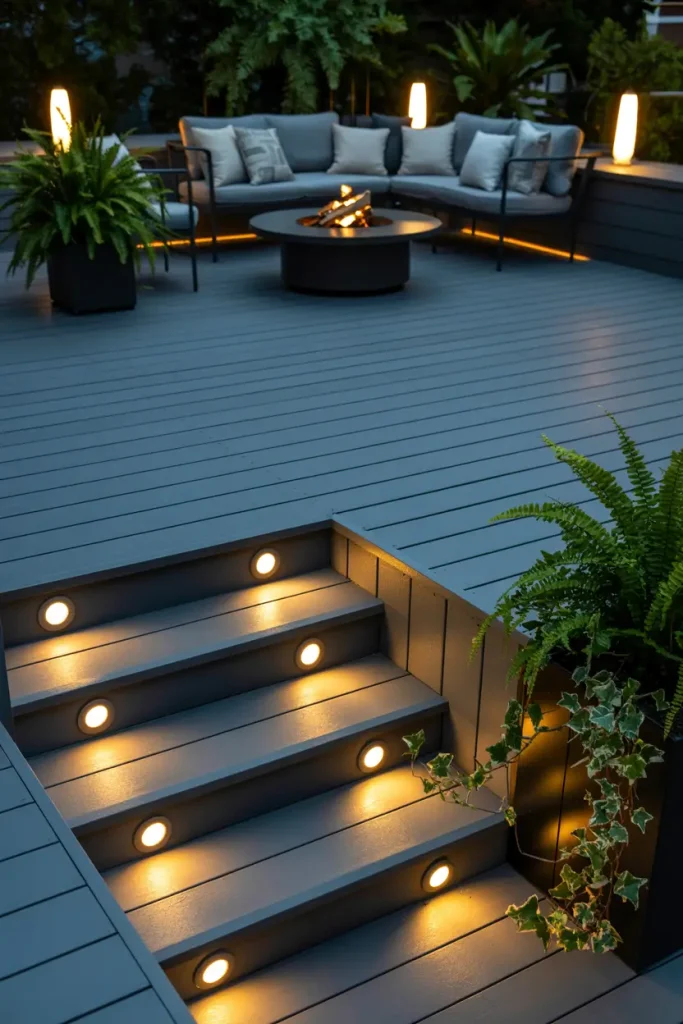
Lighting boosts function and shows off your design at night. Use:
• Recessed step lights for safety
• Under-rail LED strips for glow
• Post cap lights for detail
Soft white or warm yellow lighting complements grey tones and creates a cozy vibe after sunset.
17. Add Natural Wood Elements for Warmth
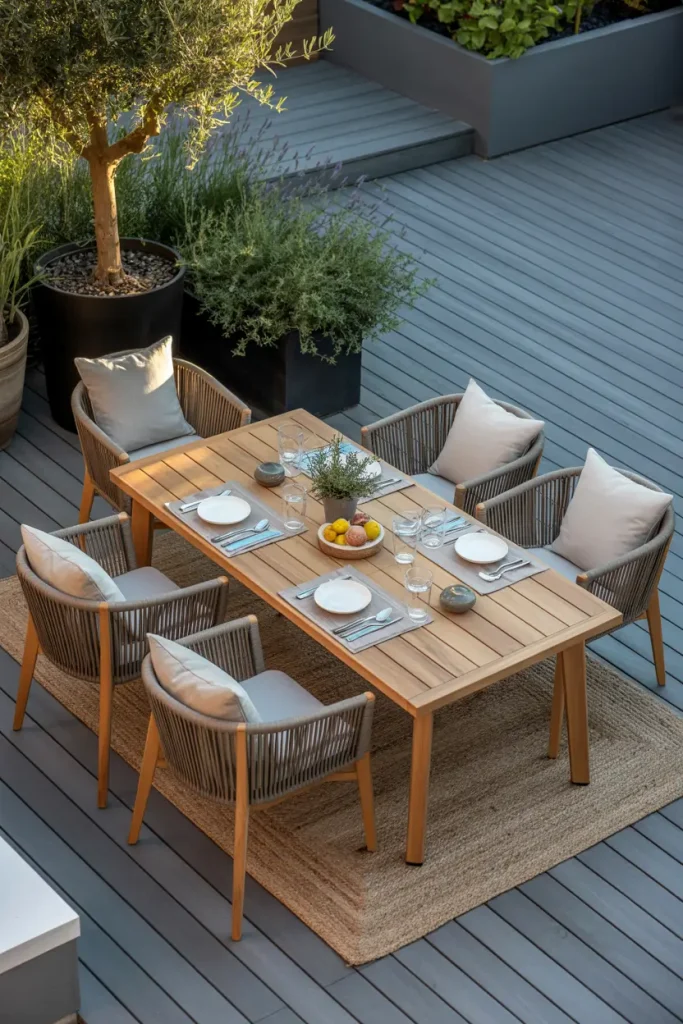
Too much grey can feel cold. Introduce warmth with natural wood furniture, accents, or even trim. Use cedar planters, acacia tables, or teak chairs. The mix of cool grey and warm wood feels modern but grounded and makes the space more welcoming.
18. Use Different Greys for Multi-Level Decks
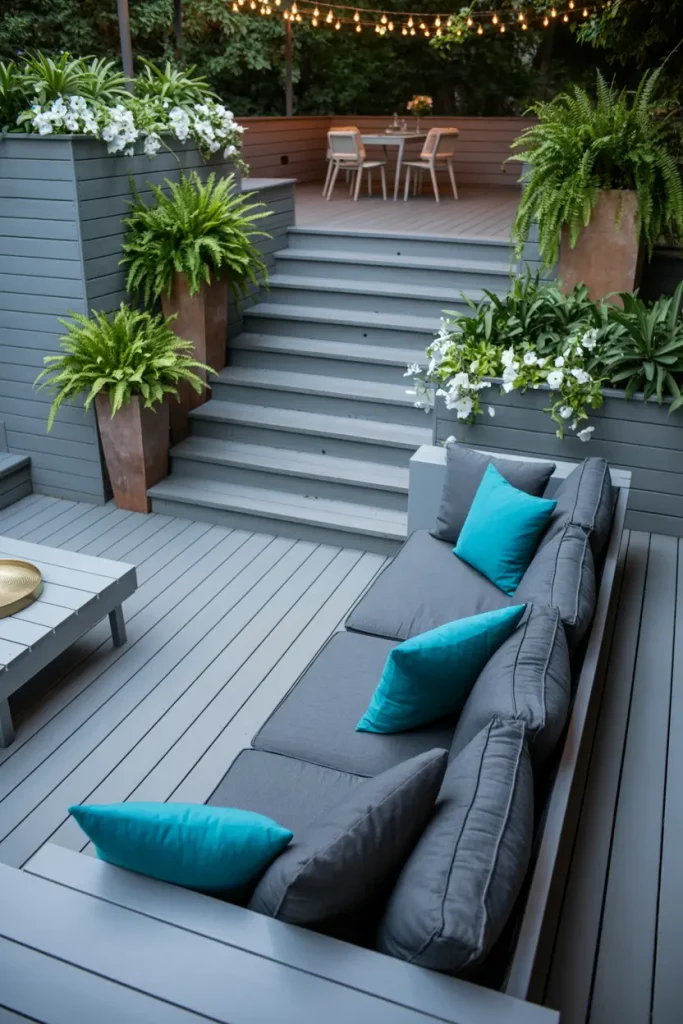
For multi-level decks, assign a different grey to each tier. Use lighter grey where people gather to brighten the space and darker tones where there’s more foot traffic. This makes your layout easier to follow and more visually interesting.
19. Create a Picture Frame Deck Layout
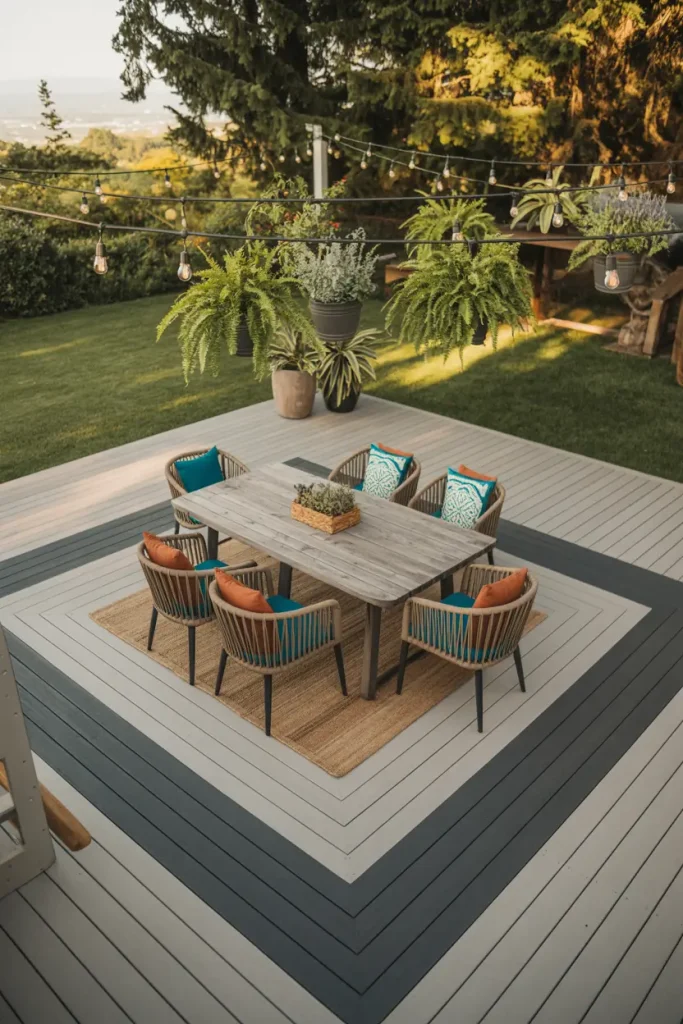
Outlining your deck with darker grey border boards adds a frame effect. It looks clean and finished, and helps define the space like a rug defines a room. This style works for rectangular, square, or uniquely shaped decks.
20. Build a Grey Floating Deck
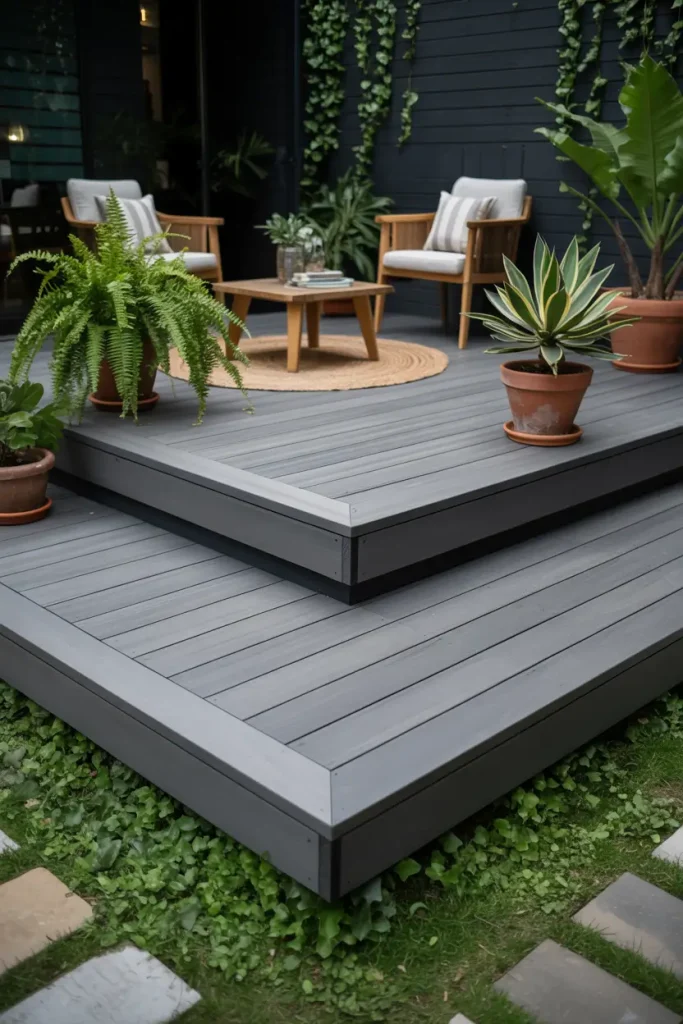
Floating decks work well in small yards or uneven ground. Using two-tone greys gives them structure and makes them feel elevated—even without stairs. Add potted plants around the edges to blend it into the landscape naturally.
21. Surround a Pool or Spa with Grey Decking
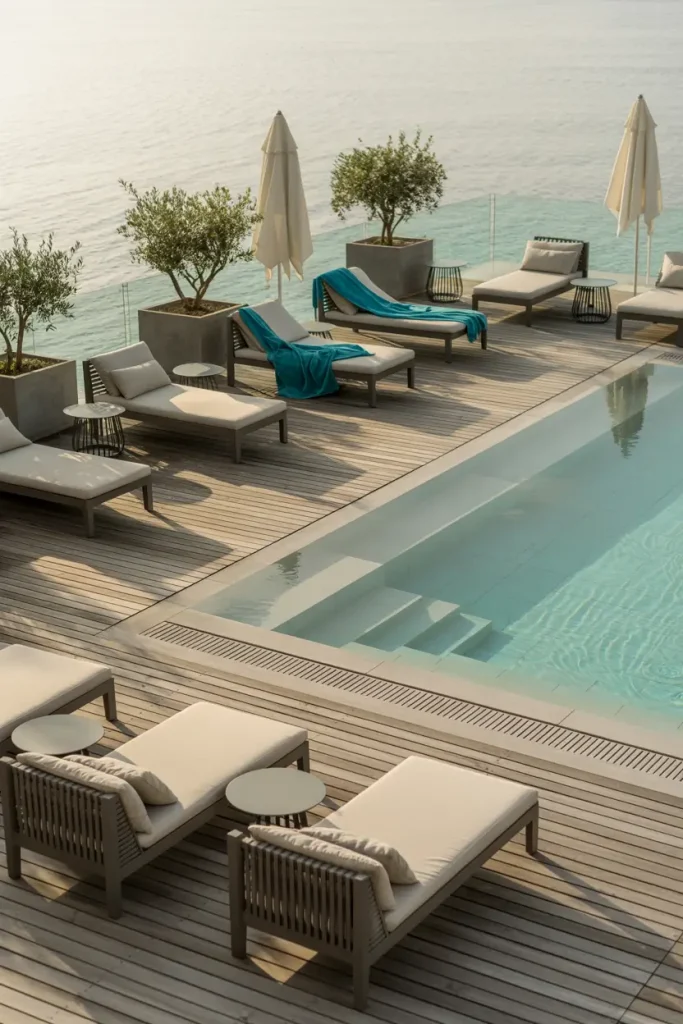
Grey decking makes a stylish, slip-resistant surface for poolside or hot tub areas. It doesn’t show splash marks easily and stays cooler than black or redwood tones. Try lighter greys near the water and darker greys farther away for balance.
22. Add Planters That Match Your Deck
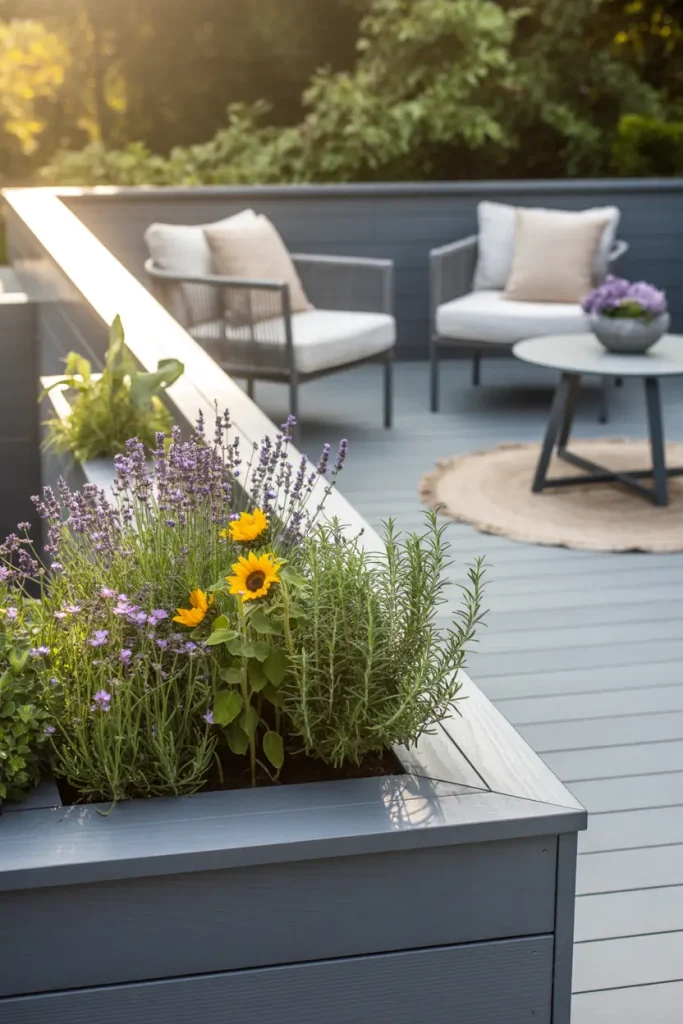
Keep your theme cohesive with planters in the same grey tones. These can be built into railings or sit on the deck surface. Fill them with flowers, herbs, or shrubs that add texture and color. They help soften the deck and bring nature closer.
23. Style the Stairs with Grey and White Accents

Alternating stair treads in grey and white enhances safety and style. Use a medium grey for the steps and bright white risers to help them stand out. This combo also adds a clean finish that’s perfect for front entries or patio transitions.
24. Pair Grey Decking with Brick or Concrete
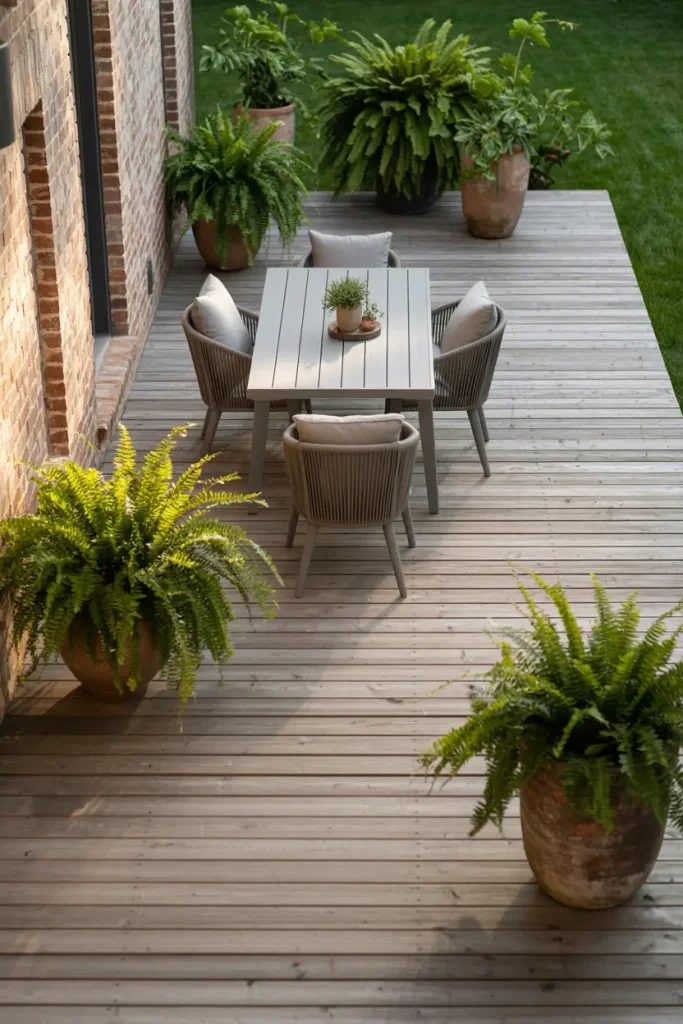
If your home features brick siding, concrete patios, or stone paths, grey decking helps tie it all together. It bridges different textures and unifies contrasting materials. Choose a tone that complements, not competes with, your home’s colors.
25. Mix Smooth and Textured Decking
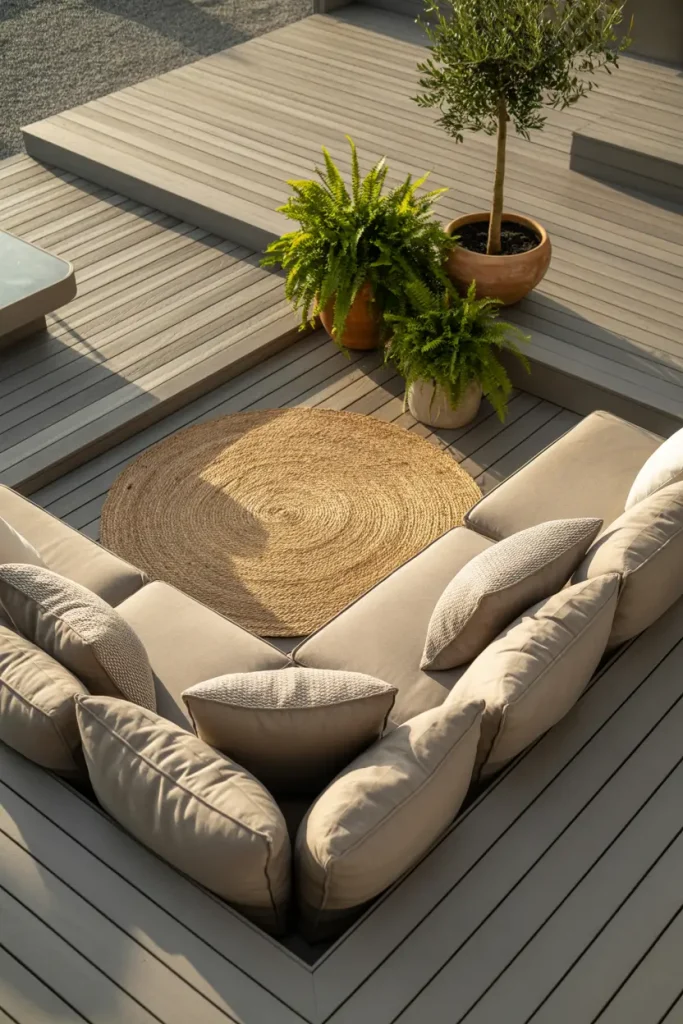
Using smooth grey planks in lounge areas and textured ones in high-traffic zones adds both function and visual interest. The contrast helps break up large decks and offers better grip in areas prone to moisture.
26. Add Grey Deck Skirting for a Finished Base
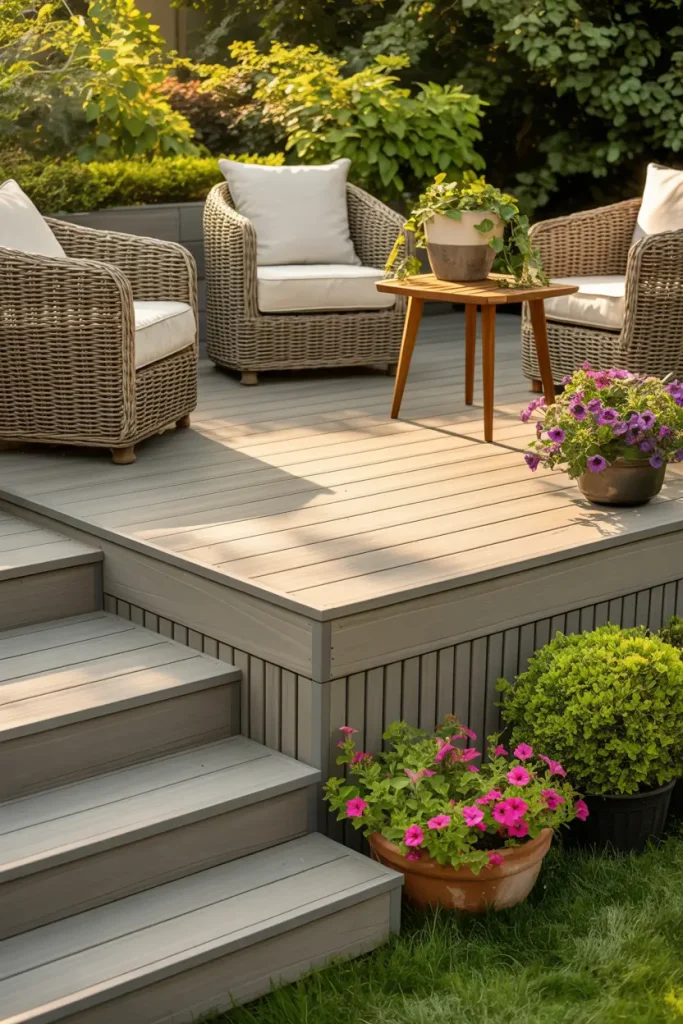
Skirting helps cover the gap under raised decks. Match it to your grey decking for a seamless look. Slatted designs allow ventilation, while solid panels provide storage options. It adds polish and prevents critters from moving in.
27. Decorate with Grey Outdoor Sculptures
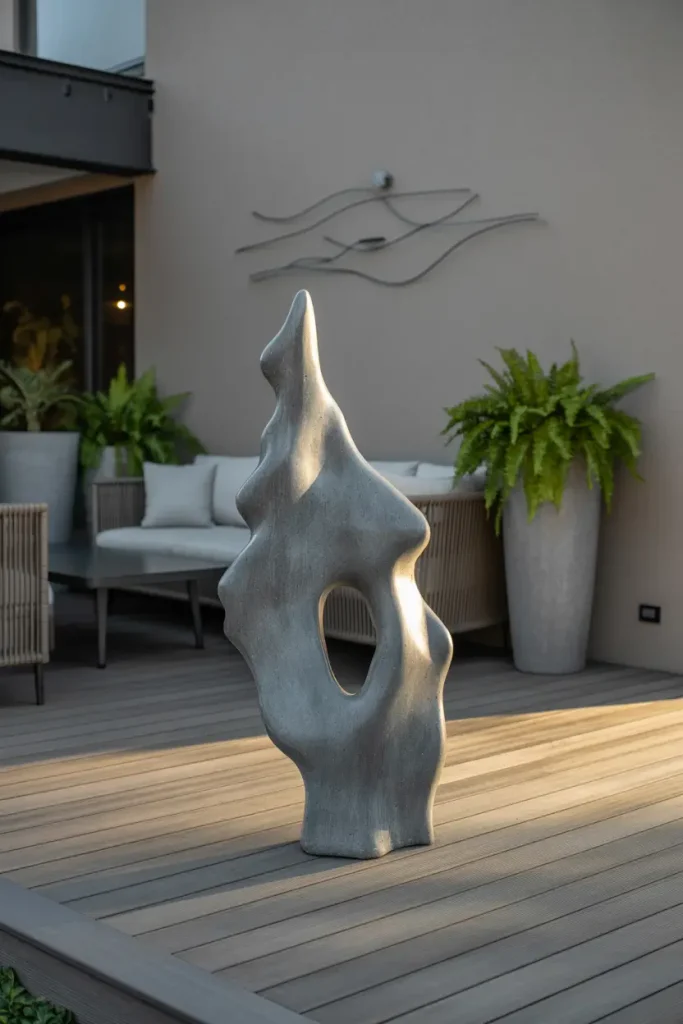
Finish your look with sculptures or decorative objects in similar greys. Think stone or metal planters, wall art, or standing sculptures. These details add interest, elegance, and cohesion without needing bright colors.
